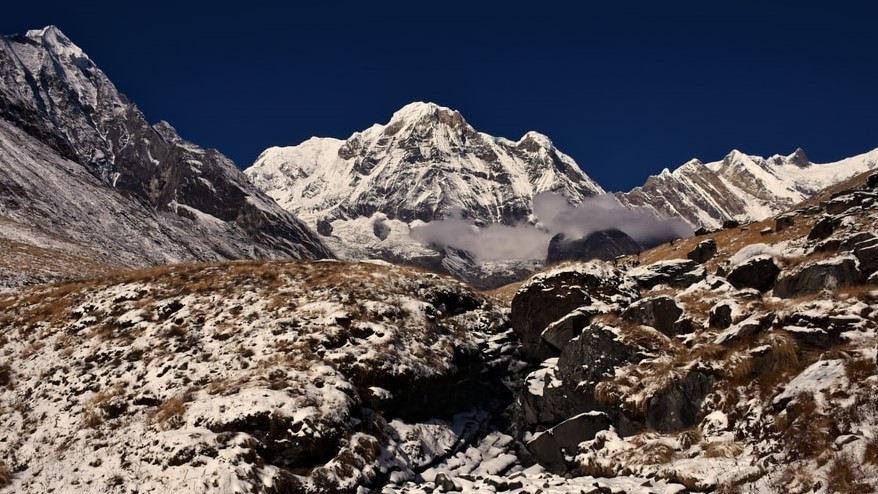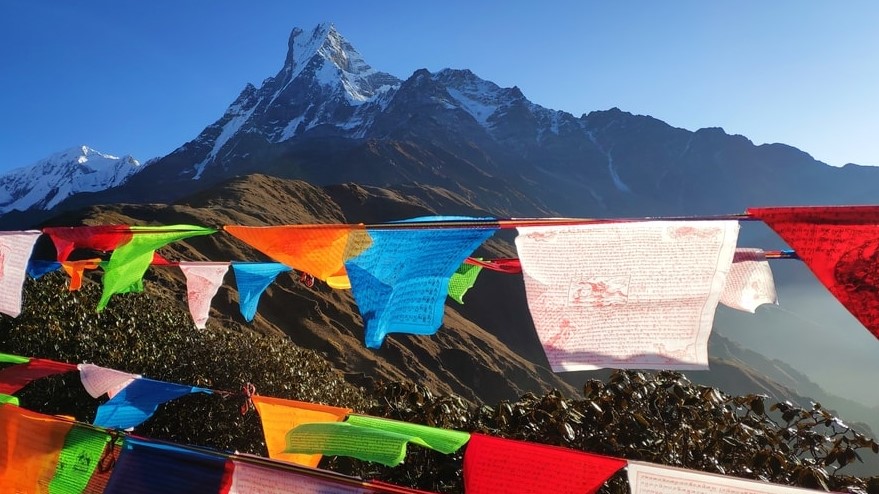BlogTravel and Tourism activities in Nepal after Coronavirus (COVID-19) crisis

24 Jul 2020 snowpath
Travel and tourism activities in Nepal after coronavirus (COVID-19) crisis, what traveller and trekker can expect? How tourism activities might resume? What could be the policies and guidelines of Nepal government to ensure the safety of travellers and its citizen? What are the roles and responsibilities of private sectors? Are there any things travellers and trekkers need to be aware and remain alert? We break down all the concerns and safety measures traveller and trekkers should take while travelling Nepal after coronavirus ( COVID-19) crisis.
Overview of Coronavirus (COVID-19) around the world
Say, the Coronavirus (COVID-19) destabilized the typical routine of planet and further cemented the warnings of environmentalists to rethink our current efforts and behaviours to save the planet and humanity. What happened is a natural disaster, and will be remembered as black chapter in the history of planet. The pandemic has sent shockwave all around the world. Also it can be a great example and valuable lesson for various generations that, despite difference in ideology, race, religion, economic imbalance, technology, politics, somehow the natural calamities compel us to fight against it together. We should be always be prepared for that.
The world came to halt due to coronavirus disease (COVID-19) affecting daily of life of people. Every corner of planet suffered enormous loss of lives and finances due to coronavirus pandemic. Nepal is not exceptional. Considering, poor health system, weak infrastructures, and small economy the pandemic claimed considerably few lives in Nepal. Still early to say, but hope the death statistics remain relatively low until scientist finds vaccine. While it will be too early to calculate and summarize economic loss in numbers.
State-sponsored or independent scientists and experts are scrambling themselves to minimize further impacts of Coronavirus (COVID-19) all over the world. Research and study are going on to develop long term strategies to prevent and fight against such disasters in future. Besides, as a short-term measure, experts are researching a vaccine for this particular Coronavirus (COVID-19). Equally important, the global supply chain has been exposed causing economic loss, affecting day to day life of people in every corner of the world.
Every business and economic sector like that of energy, service, agriculture, production, real estate, technology to name few of many, suffered huge impacts from Coronavirus (COVID-19). Seriously impacted one is, tourism. As an emergency measure to contain virus, numerous countries imposed travel restrictions and lockdown, which brought tourism sector to its knee. Trillions of dollars is at stake throughout the world. Nepal, whose economy heavily relies on tourism sector is already vulnerable. The seriousness is so much high, numerous countries are providing subsidy to normalize tourism sector. Countries all over the world are struggling to lift travel restriction and lockdown, essentially to boost tourism as one of the main priorities.
Background of Coronavirus (COVID-19) in Nepal

Though country shares the border with China where Coronavirus first erupted, Nepal was not the country to suffer in its initial phases. A mountainous geography in the north and small scale of trade between the two countries???!! Though country reported first case of coronavirus in 23rd January, it was only by the end of March the country saw rises in the Coronavirus cases. Mostly imported by returnee of workers from India and also few contributed by returnee from Middle East countries. It was only in 24th March country-wide lockdown was imposed. Lockdown was lifted cautiously on 22nd July until further notice. The international and national commercial flights were postponed till 17th of August, by now has been extended further to 31 August due to rise in coronavirus cases.
As of 12th August, 23,948 cases were confirmed out of which 16,664 recovered and 83 deaths were reported. Here, know the current status of the coronavirus cases (COVID-19) in Nepal. This Wikipedia page may be useful to know the background, history and timeline of coronavirus (COVID-19) in Nepal.
Impact of Coronavirus (COVID-19) in Tourism sector of Nepal
Beside lives, every economic sectors of the country suffered huge loss. Particularly affected is tourism, the only reliable economic sector of the country that directly and substantially contributes the reserve of foreign currency. The most affected was, eagerly planned and awaited visit Nepal 2020 which had to be postponed indefinitely due to Coronavirus.
Luckily, January and February happen to be off-season for trekking and travel in Nepal. By then pandemic was fast growing in other parts of Europe, US and Asia, while there were only countable imported cases in Nepal. Ironically, there were still few numbers of travellers and trekkers stranded at Nepal until mid-March. Nepal had not imposed country-wide lockdown till 24th March. Many stranded travellers after lockdown were airlifted by respective countries Australia, Germany to name few before community transfer of virus started in Nepal.
Nepal is popular for two travel windows of spring and autumn. So, in reality, Nepal tourism sector suffered substantial loss only in the month of March, April and May. The upcoming travel window to Nepal are months of September, October and November. Highly busy months to travel and trek. Definitely will paint true picture at what degree Nepal tourism sector suffered, by the end of those peak season.
The heterogeneity spread of virus around the world is also a big hurdle for everybody to anticipate what comes next. Entirely new of its kind, the virus has also challenged scientists and experts to claim boldly success on vaccines, how second wave of the contagion may look like, genetic changes of virus in future, dormant and asymptomatic nature of virus and so on. Right now, claiming Nepal safe to travel and visit will certainly receive backlashes and criticisms. Furthermore, may lose credibility in the international community.
Government plan aftermath Coronavirus pandemic for tourism sector of Nepal
The Nepal government has apportioned fiscal budget of NRS 1.26 billion (approximately USD 10,563,380) to tourism sector for the year 2020/2021. The budget came during the coronavirus (COVID-19) crisis. So, government formulated the policy, especially targeting the Coronavirus pandemic (COVID-19) and its aftermath impacts on tourism sectors. Doubtful though ambitious project to bring 2.5 million tourists in Nepal was projected in budget, still is in book but will definitely can’t meet the target under current scenario.
Management improvement and regular flights of national flag carriers has always been at least one of the main goal of every government till date to boost tourism sector. Right now limited to few destinations, expansion of those carriers to numerous countries and cities is another huge task for government. Hope it proceeds fast and promptly. Identification of new tourist destinations, promotions of organic and remote destinations are some challenging agendas. Development of new infrastructures including airports were old policies of visit Nepal 2020, further renewed for this fiscal year.
Will it be safe to travel Nepal after Coronavirus pandemic (COVID-19)?
It is still early and hard to say how and when virus will be contained world-wide. Even though, there are news of successful test of vaccines, industrial production and world-wide distribution of coronavirus vaccine may take still couple of years. So, our assumption most of the countries in the world will anyway lift lock-down and travel restriction cautiously with numbers of rules and regulations to ease the economy. May sound impractical, but Nepal government should be able to allocate quotas on travel and tourist visas for certain period of time to certain countries. Postponing on arrival visas on Tribhuvan International Airport (TIA) also can be another safe measure.
As matter of fact, Nepal has already lifted country-wide lockdown and the international commercial flights will resume from 31 August (updated on 10th August), if COVID-19 cases don’t rise abruptly again till then. Certainly, Nepal will also follow the guidelines set by WHO and other experts and take effective measures to minimize spread of virus and will open tourism sector gradually. So, we assume Nepal will be safe to travel once tourism activities start throughout the world. To claim Nepal will be safe to travel,
1. Nepal has followed the guidelines of WHO and experts to contain the coronavirus. That also implies, Nepal is co-operating and will further co-operate to ease the economy including tourism sector upon studying various examples and steps other country takes.
2.Though Nepal shares boarder with China, the country never exported the coronavirus (COVID-19) to other countries. In fact, the country suffered pandemic only later stages while virus was hitting hard in countries like China, Italy, Iran, Europe and USA. The initial strategy Nepal opted to contain and spread of coronavirus is a story of success.
3. Like rest of the world, Nepal is highly cautious not to import any coronavirus cases in the country and suffer major setback after struggling so hard. So basically, saving lives of its citizens will be one of the main priorities of Nepal. So, it is unlikely Nepal will welcome every travellers and trekkers merely to boost tourism. The mechanism will surely safeguard health of its citizens and collaterally of travellers as well. So, we say Nepal will be safe to travel and trek soon.
4. Trekking region of Nepal is sparsely populated due to its remoteness, so the risk of contacting virus is very minimal for trekkers comparing other tourism activities. If a trekker remains alert and follow guidelines set by WHO the risk of contacting coronavirus is almost null during trekking. However, one should be always careful and take precautions while spending nights at tea houses. Also, if trekkers and travellers avoid crowd in cities like that of Kathmandu, Pokhara, Chitwan and Lumbini anybody can say Nepal is safe country to travel.
5. Nepal is complying with rest of the world and is releasing day to day cases of Coronavirus (COVID-19) to its citizen and world. In other words, Nepal is swiftly and promptly providing information and data to world regarding coronavirus. So, Nepal is open to share all the information and will specifically help travellers and trekkers in future to know and understand and decide on their own whether Nepal is safe to travel or not?
6. Nepal will definitely wait & watch how experts suggest and formulate plan to open tourism sector. Without doubt, will follow guidelines and regulations set by those experts. Plus, the country can modify the rules and regulation on its own to enhance safety of its citizen including that of travellers and trekkers.
7. In current situation it is unlikely; the country will see enormous flow of trekkers and travellers overwhelming the system. So, there will be manageable numbers of visitors that can help further strengthen the safety of travellers with ease.
What would be the role and responsibilities of private companies and agencies to safeguard safety of travellers and trekkers?
Broad policies and guidelines to manage and smoothen the tourism sector will be formulated and implemented by government of Nepal. But, private companies and agencies working on tourism sectors also have some roles and responsibilities to safeguard travellers and trekkers from the pandemic including themselves.
1.Testing crews and workers frequently against coronavirus (COVID-19) those come in direct contact with travellers will be the most important task of private companies and agencies. Providing safety kits, educating them, providing updated information on coronavirus should happen more often.
2.Booking and operating tourism activities within small scale and with manageable numbers of travellers in a group can be a good start.
3.Encouraging travellers to travel in group with family and friends they already know can be effective from the safety point of view.
4.Encouraging and convincing travellers and trekkers to visit less-crowded region and area will also strengthen safety in certain degree. Promoting and substituting itinerary of Khopra Danda Khayer Lake itinerary to that of Annapurna Base camp can be good example. It promotes lesser-known region plus enhance safety of trekkers.
5. Providing short, yet equally attractive itinerary for travellers and trekkers rather than focusing in lengthy stay of travellers in Nepal.
6. Increase credibility among the travellers in optimal level. Providing honest information to travellers than approaching with push sales. It seems unreasonable, but will surely benefit everybody in long-term. Anyway, we are just trying to start tourism activities after horrendous pandemic. So why not with faith?
How to minimize risk of contracting coronavirus yet travel and visit Nepal?

The risk of contracting coronavirus is still there, in any part of the world not only in Nepal. A fast spreading and asymptomatic nature of the virus is highly challenging. A single case of coronavirus can lead to a pandemic as we have witnessed. But we genuinely don’t think people will stop economic activities waiting for vaccine. It is also certain that, until then all of us will be asking and practicing precautions to minimize the spread of virus. Sooner or later #stayhome will be replaced by #staysafekeepsafe and it is already happening in certain part of world.
1.Following guidelines of World Health Organization (WHO) is one of the best ways to remain safe. Surely, there will be certain changes in regulations in near future regarding inter-country travel and visit. Keep eyes on it.
2. Not only in case of Nepal, once lockdown and travel restriction uplifts, closely monitor the situation of the respective country you travelling. Ask and look for advice of the experts, if you are not sure.
3.Regularly visit the websites and information portal of embassies of Nepal in your country and of your country in Nepal. Gather every important information about Nepal.
4.Nepal won’t vigorously and randomly welcome every traveller in disrupted manner any soon, so follow the criterion set by tourism sectors of Nepal.
5. Staying safe is personal responsibility. So, stay safe and help community by keeping them safe as well.
6.Travel and trek in a small group along with known friends and family members as much possible. May not be cost-efficient and hard to manage but nothing is better than being safe and keeping safe.
7. Asking appropriate and less-crowded itinerary with travel and trekking agencies, asking more information than usual inquiries can be innovative aspects travellers and trekkers can take.
8. Understanding health system of Nepal, insurance coverage for COVID-19, rescue coverage by insurance company is also equally important.
Concluding, here we provide some of the important lists of ministries of Nepal and bureaucrats under them. Is always helpful to update and know various new information about Nepal.
Department of Immigration
-Can be useful to understand any changes in visa regulations. A bureaucrat Department that works for Ministry of Home Affairs.
Ministry of Home Affairs
-Deals with internal security, crisis management, public administration. Department of Immigration falls under the supervision of Ministry of Home Affairs.
Ministry of Health and Population
-Usually deals with health-related matters of Nepalese citizens. For now, they provide day to day updates on coronavirus cases as well.
Ministry of Culture, Tourism and Civil Aviation
– Updates ,regulates, supervises and provides various sorts information related to travel and tourism activities including policy formulation.
Department of Tourism
-A bureaucrat Department that works for Ministry of Culture, Tourism and Civil Aviation.
Ministry of Foreign Affairs
-Deals with external affairs with various countries including embassy related matters.
Ministry of Information and Communication
-Regulates information and supervises any communication related matters.
Note : Any statements made above are purely perceptions and insights of author. In no way it should be regarded as an expert advice and any individual should not act in such a way.

